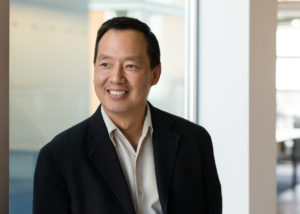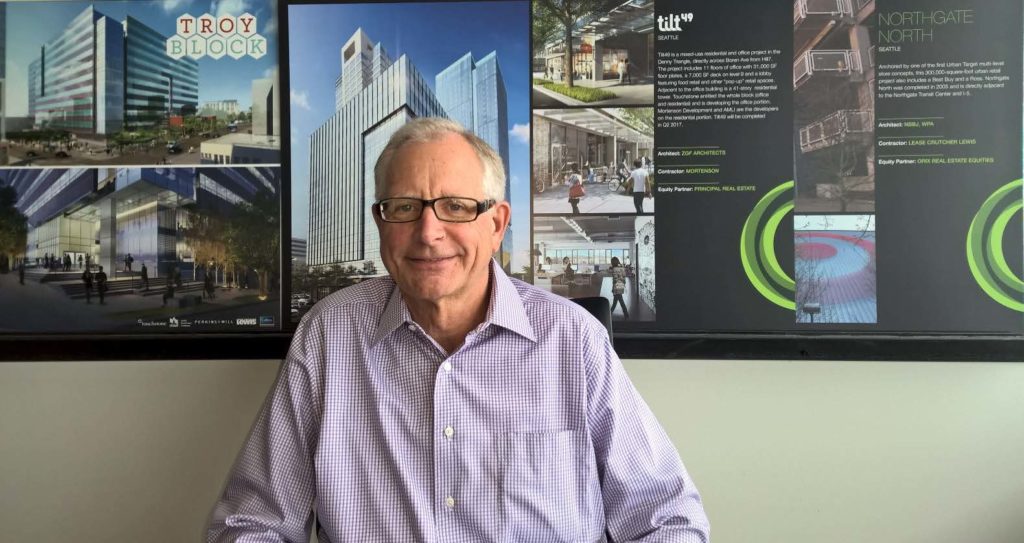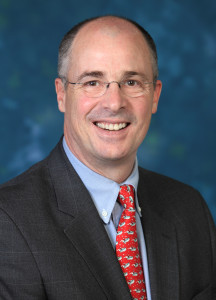On October 13th The Runstad Center held its 3rd Annual Leadership Dinner where we introduced our newest video describing “Why the Runstad Center matters!” It’s a great overview of the Center’s people and programs and definitely a must see if you are interested in an advanced degree in real estate. Check out the full video here
Category: Board Highlights
Creating liveable communties: a conversation with architect David Yuan
 NBBJ, a leading global architecture firm, is well known locally for its work on familiar Seattle buildings, including the Bill & Melinda Gates Foundation, Safeco Field, and 2 Union Square. David Yuan is an Architect and Partner at NBBJ and has been a Runstad Board member since 2013. During his 26 year tenure at NBBJ, he has worked on a number of high profile projects, including Madison Centre, Russell Investments Center, Pacific Place, and the renovation of the Seaboard Building.
NBBJ, a leading global architecture firm, is well known locally for its work on familiar Seattle buildings, including the Bill & Melinda Gates Foundation, Safeco Field, and 2 Union Square. David Yuan is an Architect and Partner at NBBJ and has been a Runstad Board member since 2013. During his 26 year tenure at NBBJ, he has worked on a number of high profile projects, including Madison Centre, Russell Investments Center, Pacific Place, and the renovation of the Seaboard Building.
One of his recent projects, three new blocks for Amazon in the Denny Triangle, has garnered significant attention in recent press. Yuan worked with the NBBJ team on the design and to secure land use approvals for the three block project, which included obtaining three alley vacations from the city in less than a year.
“One of the main drivers of the project is to create a neighborhood,” Yuan emphasizes, “and to promote an active street environment, encouraging pedestrian activity through public amenities such as mid-block pedestrian connections, a dog park and a sports field.”
At the lower levels in each office tower, NBBJ has designed what they term “Centers of Energy”, spaces that foster informal meetings and increased collaboration among Amazon employees.
Of course, all eyes are on the Spheres, three iconic structures inspired by classic greenhouses that provide employees an opportunity hold meetings in a plant rich environment, complete with tree houses. “We wanted to create an environment where employees could think creatively and come up with ideas they may not have had in a standard workstation. The Spheres were technically challenging and designed not only to accommodate a diversity of plants, but to function as an effective place to meet during the day.”
NBBJ endeavors to design vibrant places that entice people to be creative, engage with each other and with their surroundings, a goal that Yuan continues to champion in his other current projects, including the 36-story Madison Center in downtown Seattle, and Centre 425, a 16 story office building in Bellevue both under construction.
As a Board member, Yuan stresses the host of opportunities offered by the Runstad Center. “Make sure you are well attuned to your own passions, interests, and skills,” he recommends, “and make use of the affiliated resources, including the great alumni and the industry connections.”
Acknowledging Seattle’s growth in recent years, he recognizes the need for all parties to coalesce and build the city together. “Seattle has been blessed as a destination for creative people. Because we are open to new comers and are located in a wonderful natural environment, we attract innovative companies who look to recruit the brightest and the best as a result,” Yuan says. “However, we are experiencing growing pains, affordability issues, and are heavily constrained by physical challenges like hills and water. So the question is, how do you design for growth? How do you create community that is connected to transit, has open space, and are highly liveable while accommodating higher densities? An answer must be found by neighborhood leaders, developers and policy makers working together to find creative solutions for the future.
Leaving a Legacy: A Profile of Douglas Howe

It is more than fair to say that Douglas Howe, a Runstad Advisory Board member since 2011, has a distinct proclivity and sharp acumen for Pacific Northwest commercial real estate. He is the founder of Touchstone, currently one of the region’s most active developers, with approximately 2 million square feet currently under construction. Most recently, in June 2016, Touchstone opened the luxurious Thompson Hotel and Sequel Apartments, a stunning project designed by Tom Kundig of Olsen Kundig and Jensen Fey Architects. This project took an immense amount of work and collaboration, born out of Howe’s venerable career.
Douglas Howe quickly discovered that his primary passions were in landmark renovation and urban office, and his priority became creating the best work environments possible. One of his projects, the Kirkland Marriott Courtyard Hotel, initially included a contract with Marriott, but following September 11th, 2001, Marriott pulled out due to economic fears. Touchstone, however, already had the franchise. “We became accidental hotel developers. But we executed it well. It was a perfect compliment to Touchstone as an office developer… There are a lot of natural synergies between office and hotel development,” Howe reflects. Since the Kirkland Hotel, Touchstone has completed numerous, successful office and hotel projects, culminating in the Thompson Hotel.
“You know what I always said? If people live in it or sleep in it, we don’t do it!” Howe laughs. Given that he became an “accidental hotel developer”, the irony is that he is also capping his career with a well-received, high-end apartment complex attached to a boutique hotel. With its sweeping, unobstructed view of and proximity to iconic Seattle features, the Thompson Hotel and Sequel Apartments appeals to visitors and Seattleites alike. Howe’s philosophy in picking sites and projects has always been very intentional, strategic and forward looking. This particular project actually began in the 1990s, when Howe began developing a relationship with the site owners, but wasn’t until 2007 that he gained control of the property. From there, financing the project, establishing a design and program that was unique and appealing, and selecting the right hotel operator were all challenges that Touchstone faced. Their work has paid off, and is reflected in every distinguishing detail of the project. Touchstone worked closely with Josh Henderson, Seattle celebrity chef, to open Scout on the ground floor. Signature to most Thompson Hotels, there is a spectacular roof top deck, where Henderson has also established The Nest. Touchstone aimed to create a different, sexy and edgy space that appealed to a discerning, new age crowd, and, while they are still in the process of refining details and have only been open for one month, they are already attracting large, national corporations to utilize their event space and conference rooms. Connected to the Thompson Hotel by a clever courtyard space is Touchstone’s first multi-family project, Sequel Apartments, which enjoys all the benefits of being a hotel guest including room service, housekeeping and concierge. Sequel is already 75% leased and on track for full occupancy by the end of summer 2016.
Howe’s legacy lives on in the Touchstone team. As Howe began to plan his retirement, he put in motion a succession plan for Touchstone, partnering with Urban Renaissance Group and infusing Touchstone with significant capital for the next market cycle in an agreement lauded as NAIOP’s 2015 Deal of the Year. “Touchstone is a great team,” Howe says, “It’s up to them to find the future. I have every confidence that they will be successful.” Touchstone is the recent winner of the prestigious NAIOP Developer of the Year award, so it seems that Howe’s instinct about his team is spot on. The advice that he aspires to impart on all Runstad students, aspiring and current developers then, rings sound. “You can do better. Pay attention to the details and make an impact on the urban environment. As a developer, you have a responsibility to leave a legacy, a well-designed building that fits within the context of the urban environment and can withstand the test of time. You can create a special place. Developers can make that happen within a budget and we try to accomplish this and stand out in every project.”
Board Member Highlight: Peter Orser
Currently serving as vice chair of the Runstad Center Advisory Board, after many years as an esteemed member of that board, Peter Orser will assume the mantle of Board Chair in 2016. We are incredibly fortunate to have him, an executive whose credentials read like a “Who’s Who” in the world of real estate.
Peter served as President and CEO of Weyerhaeuser Real Estate Company, where he headed five different homebuilding operations across the country. He came to that position from Quadrant Homes, where he had a distinguished history and served as President of the company. Peter’s civic commitments are both diverse and impressive, having served as Chair of the King County Housing Authority, President of the King & Snohomish Counties Master Builders Association, Chair of the Board of Forterra, as a board member for the Seattle Chamber of Commerce, Chair of the Mercer Island Planning Commission as well as serving a term on the City Council.
Whew.
He has said he would have given anything to have had the Runstad program to take him into his career. As a graduate of the UW Masters in Urban Design & Planning program, Peter was one of the only grads to go into the private sector. The various programs in the College of Built Environments are framed mostly on design, but the reality of the real estate world encompasses not only design but engineering, finance, law — and more. He wants to help the program reach its full potential, incorporating all these perspectives into a holistic vision of real estate development. That’s what real estate is all about.
In the early days of his career, Peter pursued environmental engineering but he really wanted to build things, things that together made communities. He learned to do so through a process of experimentation and on-the-job training, discovering and defining what worked and what didn’t as he went. The Runstad Center provides a substantial leg up over that more organic process. Exposure to industry best practices and cutting edge innovations through coursework, internships, interdisciplinary competitions and real life field experience yields students who are ready and able to create value on projects in both pragmatic and aspirational ways. He intends to remain a big part of that.
It is the Runstad students who inspire Peter. As the Center attracts international students from around the globe, the program mirrors a world that is much more diverse. This “diversity of thought”, as Peter describes it, is a particular educational benefit at the Runstad Center, where world perspectives inform the vision for our own Pacific Northwest future and vice versa.
When speaking with Peter, one can’t help being inspired by his excitement to be part of a program poised for greatness, on a path to being one of the top real estate programs in the country. As Peter says, this region is an “economic engine”, unrivaled anywhere in both natural resources and industry. And it needs our help, too, building the bridges, ports, roads, and housing that will be needed. “This generation will be making decisions that will last a long time,” says he. “It is an exciting time for our students. There will be exciting opportunities to make a real impact.”
As a young professional, Peter Orser was part of implementing a new paradigm for that generation — “growth management”. Now we’re in the midst of an era of rapid job growth, technological innovation and environmental change and he is as excited for a new generation of young professionals to determine and implement a new paradigm to guide development. “It’s a fantastic opportunity for someone in real estate to be a part of this emerging reality.”
